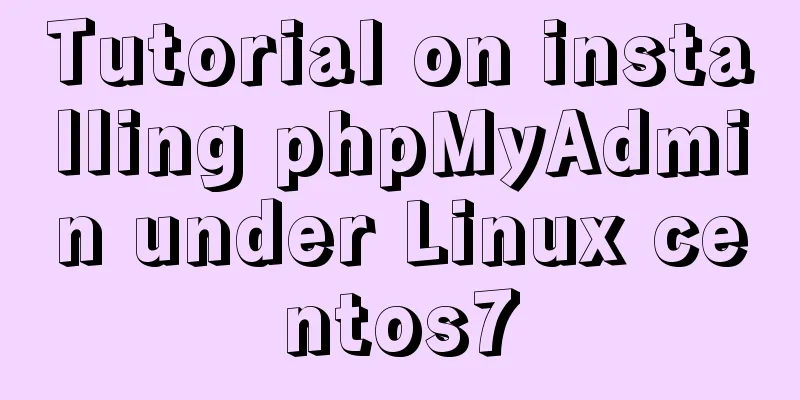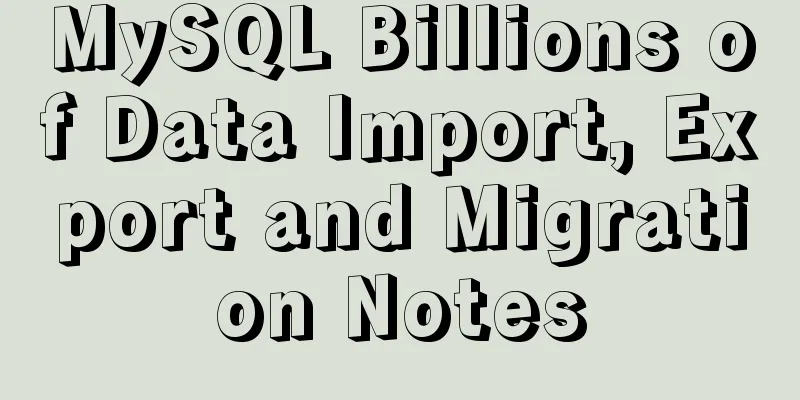Tutorial on installing phpMyAdmin under Linux centos7

|
Record some problems encountered when installing phpMyAdmin after setting up the lamp operating environment 1. Download the phpMyAdmin compressed package from the official website wget -c https://files.phpmyadmin.net/phpMyAdmin/4.9.3/phpMyAdmin-4.9.3-all-languages.tar.gz 2. Unzip to /var/www/html/ 3. Rename cd /var/www/html/ mv phpMyAdmin-4.9.3-all-languages phpMyAdmin This step can usually be accessed normally through localhost/phpMyAdmin, but sometimes there are always other problems. 4. Go to the phpMyAdmin installation directory and copy the simple configuration file config.sample.inc.php of phpmyadmin as the default configuration file config.inc.php Copying Files Editing the Configuration File The configuration file now requires a password phrase, find $cfg['blowfish_secret'] = ''; //Add a few characters here at random. If it is too short, there will be an error message. $cfg['Servers'][$i]['auth_type'] = 'cookie'; //The default is fine here. $cfg['Servers'][$i]['host'] = 'localhost'; //You can change it to your own IP address or domain name. It doesn't matter if you don't change it. 5. If an error message appears The variable Create a new tmp folder in the phpMyAdmin directory mkdir tmp chmod 777 tmp 6. It may prompt that some extensions are missing Install the PHP database extension package Install the package that supports the multibyte string extension Install the package that supports the multi-encryption extension 7. Other computers need to open port 80 or close the firewall to access Open port 80 firewall-cmd --zone=public --add-port=80/tcp --permanent //--zone scope, --add-port=80/tcp add port/protocol, --permanent permanent effect Restart the firewall Or just turn off the firewall Check the firewall status Stop the firewall Turn off Enable Firewall 8. If the Forbidden prompt appears, it may be blocked by selinux. Check if SELinux is running in the case of enforcing //Enforcement mode, domain/type will be restricted permissive //Permissive mode, there will be warnings but no restrictions domain/type disabled //Disabled state, not running settenforce 0 //Convert to permissive mode, which is equivalent to temporarily shutting down SELinuxx settenforce 1 //Convert to mandatory mode Set SELINUX=disables to disable it from booting Summarize The above is the tutorial on how to install phpMyAdmin under Linux centos7 introduced by the editor. I hope it will be helpful to everyone. If you have any questions, please leave me a message and the editor will reply to you in time. I would also like to thank everyone for their support of the 123WORDPRESS.COM website! If you find this article helpful, please feel free to reprint it and please indicate the source. Thank you! You may also be interested in:
|
<<: WeChat applet calculator example
>>: Detailed explanation of the role and working principle of MySQL master-slave replication
Recommend
Vue realizes picture switching effect
This article example shares the specific code of ...
MySQL NULL data conversion method (must read)
When using MySQL to query the database and execut...
The complete usage of setup, ref, and reactive in Vue3 combination API
1. Getting started with setUp Briefly introduce t...
How to use resident nodes for layer management in CocosCreator
CocosCreator version: 2.3.4 Most games have layer...
Implementation of Docker deployment of Tomcat and Web applications
1. Download docker online yum install -y epel-rel...
SQL Optimization Tutorial: IN and RANGE Queries
Preface "High Performance MySQL" mentio...
Tutorial on using portainer to connect to remote docker
Portainer is a lightweight docker environment man...
WeChat applet component development: Visual movie seat selection function
Table of contents 1. Introduction 1. Component da...
CSS sample code to achieve circular gradient progress bar effect
Implementation ideas The outermost is a big circl...
Detailed example of deploying Nginx+Apache dynamic and static separation
Introduction to Nginx dynamic and static separati...
How to connect Navicat to the docker database on the server
Start the mysql container in docekr Use command: ...
Markup Language - Title
Click here to return to the 123WORDPRESS.COM HTML ...
Complete steps to install MySQL 8.0.x on Linux
MySQL Introduction to MySQL MySQL was originally ...
Briefly describe the MySQL InnoDB storage engine
Preface: The storage engine is the core of the da...
Implementation of nginx flow control and access control
nginx traffic control Rate-limiting is a very use...









